Discover Morocco
Camels, sidecar desert ride and souks!
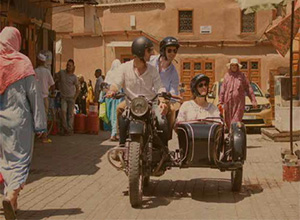
Duration: 14 days
Area: Casablanca, Rabat, Fes, Sahara Desert, Skoura, Marrakech, Essaouira
Style: cultural tour
Comfort Level:![]()
![]()
![]()
![]()
![]()
Morocco is a vibrant and modern country, yet retaining its mystery and exoticism; a country with cities with a unique atmosphere of their own, but also a country where the rural world has changed very little in centuries; a rich and diverse melting pot of cultures, peoples, and landscapes.
Travelling through Morocco is travelling back and forwards in time. Encountering smells, sights and sounds; the simple pleasures of life. There is an excitement in sharing in the enthusiasm and vitality of a society full of the future, and yet deeply rooted in its legendary past – a society of men and women full of warmth, to whom hospitality and a welcoming smile towards foreigners are regarded as sacred duties.
We have created this full country sightseeing itinerary, so you are able to see all there is to offer in Morocco.
Overland touring in Morocco allows you to visit many parts of the country and experience the extreme diversity.
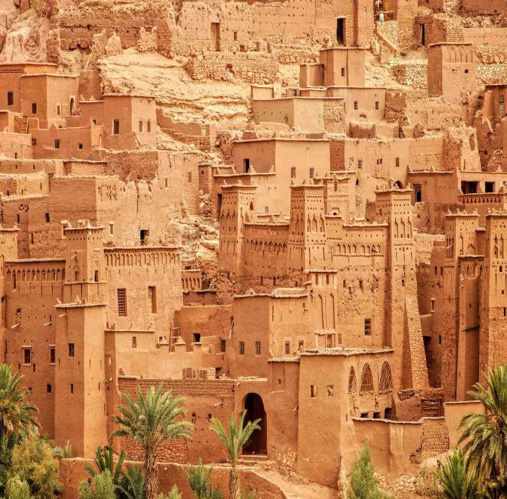
Weather:
Morocco is a country of 4 seasons in one day! However, and in general, the best time to visit Morocco is March until mid-June, September, October and November.
End of June, July and August the weather is hot, in this time we suggest to visit one imperial city plus the coast or the Mountains.
December, January and February are winter months but most of the time days are sunny, it gets cold at night.
| Day 1 | Arrival in Casablanca Transfer to Rabat |
| Day 2 | Transfer from Rabat to Fes via Meknes & Volubilis |
| Day 3 | Tour of Fes AM. Food Tasting Tour PM |
| Day 4 | Hike to Mount Zalagh for Picnic Lunch |
| Day 5 | Transfer from Fes to Merzouga Transfer from Erfoud to Merzouga in 4x4 |
| Day 6 | Full Day in Merzouga in 4x4 |
| Day 7 | Transfer from Merzouga to Skoura |
| Day 8 | Full day in Skoura |
| Day 9 | Transfer from Skoura to Marrakech |
| Day 10 | Tour of Marrakech |
| Day 11 | Side Car Tour in Marrakech. |
| Day 12 | Transfer to Essaouira PM Tour of Essaouira |
| Day 13 | Transfer from Essaouira to Casablanca |
| Day 14 | Transfer from hotel to Casablanca Airport for departure flight |
Detailed Itinerary
Day 1: Arrival at Casablanca - Transfer to Rabat
Approximately 1 hour drive
Arrival at Casablanca airport. After passing through customs and collecting your luggage, welcomed by your driver and transfer to Rabat. Evening will be at leisure.
Accommodation at Riad Kalaa - 1 night
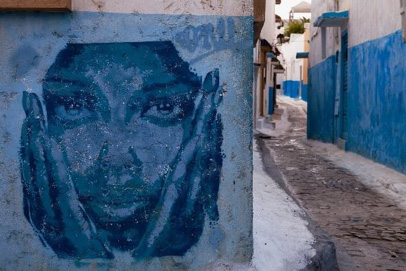
Day 2: Transfer from Rabat to Fes via Meknes & Volubilis
(approx 2hrs drive to Meknes and 1hr 30 minutes from Meknes to Fes)
Depart Rabat after breakfast and travel inland to Fes. The first stop is the hilltown of Moulay Idriss, named for Morocco’s most famous saint, great grandson of the Prophet Mohammed. He was the heir to the Caliphate in Damascus and fled to Morocco around 787, where he was welcomed as a spiritual leader. He is buried in the town, so it is a revered cultural pilgrimage site. After exploring the town, head to Volubilis, a Roman ruin surrounded by farmlands. Enjoy a tour of this ruined city, Rome’s provincial capital in Morocco. It has structures dating to the 2nd and 3rd centuries AD as well as an impressive array of stunning and well-preserved mosaics. Stroll through the towering columns and fine mosaics of Volubilis. After your tour continue on to Fes. Evening will be at leisure with your guide and driver at your disposal.
Accommodation at Palais Amani - 3 nights (B)
Day 3: Tour of Fes. Food Tasting Tour - Full Day
After breakfast, you will have a guided city tour, discovering some of the monuments and history of the medina as well as the modern part.
One of the most important centres of learning in the world during centuries, and home to the oldest university in History, Fes was founded by Idriss I in 789. It started as two separate cities or medinas, stretching on both banks of the river Jawhar, facing each other. They were made into a single one in 1070 by the Almoravids, who erected the city ramparts that can be seen today and built bridges across the river Jawhar in order to connect both sides.
The arrival to power of the Almohads, and the settling of Andalousian expatriates expelled from Spain, brought an important development to Fes, which became the largest city in the world during the second half of the 12th Century, with an estimated population of 200,000 souls. But it is under the rule of the Merinids, in the 13th and 14th Centuries, when Fes would reach its height, replacing Marrakech as capital of the empire.
The principal monuments of the medina date from that period. The Merinids started then the building of a new town outside the walls, which was called Fes Jdid, new Fes - and the old part became Fes El Bali, or ancient Fes.
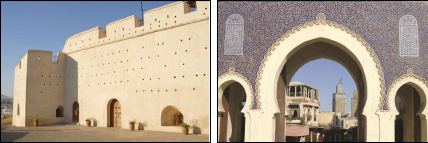
Today, Fes el Bali (meaning Fes the ancient) is an UNESCO Heritage Site, and probably the largest car-free urban area in the world. It is well known because of the skills of its artisans, who are outstanding in trades such as metal and leather working, ceramics, wood, silk, and tapestries. Despite the political capital of the kingdom being transferred to Rabat in 1912, Fes is still regarded by Moroccans as the spiritual centre of their country.
Souks Are located in the ancient city centre, the medina. The main plaza is planted with trees and provides a shaded haven from the warm sun.
In the evening, winding your way through the alleys and souks with a Fez food expert. Visit three different food souks allowing the chance to try traditional Moroccan street food including dried meats, milawi, harsha, briwats, spicy sardines, spicy potato cakes, soups, olives and more. At the honey souk were you’ll be able to taste an array of delicious wild honeys, discuss their flavours and health-giving properties and find out why honey is so important in Moroccan cooking and Islamic culture. Next investigate traditional cooking methods by visiting a furnatchi where the water for the communal bath house ‘hammam’ is also heated, and a 400-year-old ‘furan’ or communal oven and bakery.
Discover the world of spices and their uses and the secrets of the male-oriented domain of the tea.
(B, D)
Day 4: Hiking up Mount Zalagh - approx 4hrs activity
After breakfast meet your expert guide for the morning. The Zalagh hillside range sits above Fez’s sprawling medina. In Berber, ‘Zalagh’, means male kid goat and a hike along the backbone of this massive beast of a hillside gives you a taste of the Berber way of life at less than 30 minutes from the urban labyrinth below. Drive up through olive ancient groves. Hidden from the city on the other side of the mountain, you are plunged into Berber country. The population lives in almost complete self- sufficiency, using mules to farm, cooking with firewood and collecting their water from the local well. A passing shepherd waves as you drive by and as far as the eye can see you will be entranced by the Rif mountain scenery stretching out to the end of time. The hike is approx 1 hour at a leisurely pace before you are presented to a private picnic style lunch with 360 degrees of beautiful scenery. After lunch head back into Fes and the evening will be at leisure with your guide and driver at disposal.
(B, L)

Day 5: Transfer from Fes to Merzouga
(approx 7hrs drive)
This morning leave behind the ancient city and head to the Sahara Desert. Arrive to the desert frontier town of Erfoud. Continue your journey to the Camp in a 4WD. Enjoy a camel ride while watching the sunset of the Sahara Desert and a private candle lit dinner on the sand dunes with entertainment.
Accommodation at Desert Luxury Camp - 2 nights (B, D)
Day 6: Merzouga - Full Day
Today explore the sand dunes Merzouga in 4WD. A private picnic lunch has been arranged for you.
In the evening before sunset head back to camp for a camel ride and private dinner with entertainment.
(B, L, D)

Day 7: Transfer from Merzouga to Skoura
(approx 5hrs drive)
Transfer from Merzouga to Skoura via the Dades Gorges. A series of rugged wadi gorges carved out by the Dades River. The River originates in the High Atlas Mountains, flowing some 350km southwest before joining the Draa River at the edge of the Sahara. Arrive at your hotel and the evening will be at your leisure.
Accommodation at Ksar El Kabbaba - 2 nights (B, D)

Day 8: Skoura - Full Day
Full day at leisure in Skoura with your guide and driver at your disposal.
(B)
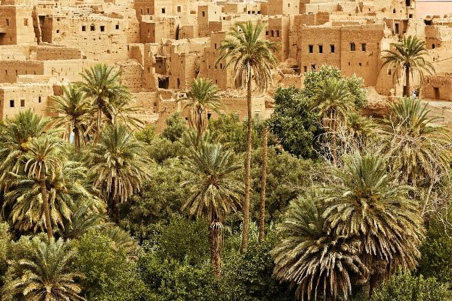
Day 9: Transfer from Skoura to Marrakech
(approx 5hrs and 30 minutes drive)
This morning transfer from Skoura to Marrakech via Ait Ben Haddou where the Moroccan film industry is located, explore the picturesque mud-brick citadel of Ait Ben Haddou, a famous village that has been used as a setting for Lawrence of Arabia, The Man Who Would Be King, Gladiator, and many other films. Arrival in Marrakech, check into your hotel and explore the magic of the Medina with your guide and see it come alive at night. Explore Djama El Fna Square, the beating heart of the city, and dive deep into the soup of fantastic sights and smells of a Moroccan folklore! Day and night, the excitement is palpable. Here come the snake-charmers, storytellers, fortune-tellers, potion vendors, Gnaoua musicians, henna artists, monkey performers, acrobats, and transvestite dancers! Try a bowl of snails or maybe sheep’s head. Or buy some water from that elaborately-dressed vendor….
Watching sunset from one of its terraces when the call to prayer from the Koutoubia minaret fills the air is one of these ‘Zen’ moments that Morocco offers. Despite its lack of significant monuments, Djemaa el Fna became an UNESCO Heritage Site in 1985, as one of the last places in the world where old oral narratives are still enacted. A soft drink or mint tea on the terrace overlooking the place is one of the activities locals enjoy.
Accommodation at La Maison Arabe - 3 nights (B)

Day 10: Tour of Marrakech - Full Day
This morning your guide and driver will meet you in the lobby of your hotel to take you on a tour of Marrakech and explore the red city.
Marrakech enjoys a legend status which conveys the ideas of mystery, sensuality, and exoticism. Its influence and fame have been so strong and intense in the history of Morocco, that as a matter of fact the country was named after the city. Marrakech was founded in 1062 by one of the chieftains of the Almoravid king Youssuf ibn Tashfin. The Almoravids were desert warriors, very much attached to their Islamic religion; the original garrison developed very quickly into a city where numerous mosques and madrasas (Koranic schools) were built. Andalousian craftsmen built and decorated several palaces, merging their style with the Saharan and African traditions, which gave the city a distinctive architectural flavour. The Almoravids also erected the city walls, and created a complex system of underground irrigation canals to bring water from the High Atlas, the khettara - a system still in use to water the several gardens of the city.
At its height, Marrakech was the capital of the Almoravid empire, which stretched as far as Senegal, most part of Spain, and Algiers. In 1147, the Almohads, tribesmen from the High Atlas Mountains who practised orthodox Islam, sacked the city, replacing the Almoravids as rulers of the empire, and destroying many of the palaces and mosques of their predecessors. New ones were built soon, though, including the famous Koutoubia mosque, which dates from this period. Ever since, alternate ages of splendour and decline sculpted Marrakech’s unique and charming character, at once decadent and full of life.
Nowadays, Marrakech is a vibrant city which exhibits a curious blend of the ancient and the modern, allowing travelers the chance to experience the genuine medieval atmosphere of the old medina, and visit the trendiest bars, art galleries and restaurants in the French Quarter, Guéliz, built at the beginning of the 20th Century, all in one day.
(B)

Day 11: Marrakech - Side Car Desert Ride
This morning your guide and driver will take you meet your Side Car Driver who is an expat and will show you the hidden treasures of Morocco. Head towards Agafay Desert which is known as the Rocky Desert. Explore the architectural relics, Berber villages and oases while discovering the lunar landscapes of the Agafay stone desert, In the afternoon stop off at one of the campsites to enjoy lunch before heading back to Marrakech in the late afternoon. Evening will be at leisure with your guide and driver at disposal.
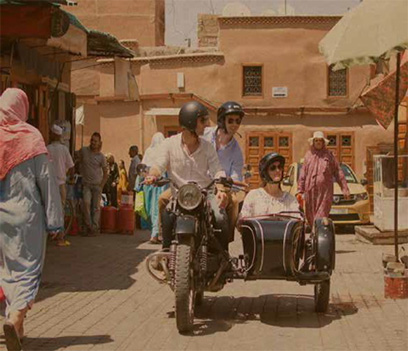
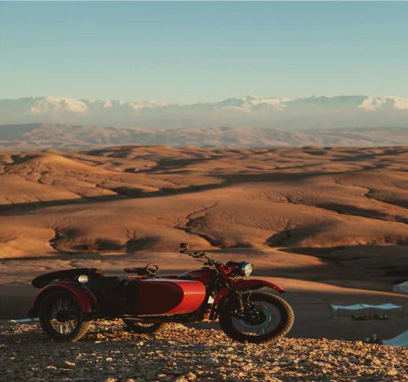
Day 12: Transfer from Marrakech to Essaouira
(approx 3hrs drive)
After breakfast check out of your hotel and drive through farmland to Essaouira, a charming small city on the Atlantic Coast. The Portuguese built a fort here in the 16th century, and in the mid-1700s, much of the city we see today was laid out by a French architect at the request of Sultan Sidi Mohammed Ben Abdallah. With your guide tour its ancient ramparts and explore the port, where bright blue fishing boats bob in the harbour, and the bustling fish market. Walk up to the old fort, with its cannons and battlements, and discover the great little artisan shops that line the narrow lanes. Evening at leisure with your guide and driver at disposal.
Accommodation at Salut Maroc - 1 night (B)

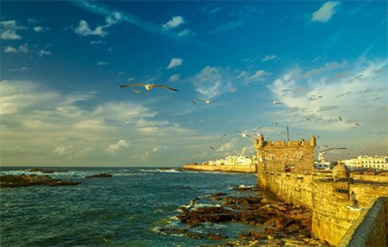
Day 13: Transfer from Essaouira to Casablanca
This morning after breakfast check out of your hotel and transfer from Essaouira to Casablanca. Once you have arrived in Casablanca enjoy a panoramic tour of the city before heading to your hotel and enjoy your last night at leisure with your guide and driver at your disposal.
Accommodation at Sofitel Tour Blanche - 1 night (B)
Day 14: Departure
This morning transfer from your hotel to Casablanca Airport for your departure flight. (B)
Day 1: Riad Kalaa, |
 |
Day 2 - 4 : Palais Amani, |
 |
Day 5 - 6: Desert Luxury Camp, |
|
Day 7 - 8: Ksar El Kebbaba, |
 |
Day 9 - 11: La Maion Arabe, |
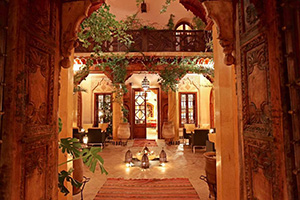 |
Day 12: Salut Maroc, |
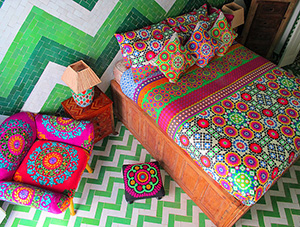 |
Day 13: Sofitel Tour Blanche, |
 |




